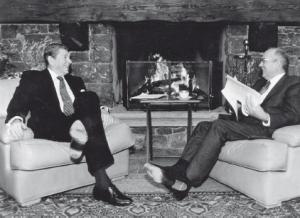
Аннотация
RUSSIA A HISTORY
Third Edition
EDITED BY
GREGORY L. FREEZE
Oxford University Press
1. FROM KIEV TO MUSCOVY: THE BEGINNINGS TO 1450
Janet Martin
2. MUSCOVITE RUSSIA 1450–1598
Nancy Shields Kollmann
3. FROM MUSCOVY TOWARDS ST PETERSBURG 1598–1689
Hans-Joachim Torke
4. THE PETRINE ERA AND AFTER 1689–1740
John T. Alexander
5. THE AGE OF ENLIGHTENMENT 1740–1801
Gary Marker
6. PRE-REFORM RUSSIA 1801–1855
David L. Ransel
7. REFORM AND COUNTER REFORM 1855–1890
Gregory L. Freeze
8. REVOLUTIONARY RUSSIA 1890–1914
Reginald E. Zelnik
9. RUSSIA IN WAR AND REVOLUTION 1914–1921
Daniel T. Orlovsky
10. THE NEW ECONOMIC POLICY (NEP) AND THE REVOLUTIONARY EXPERIMENT 1921–1929
WIlliam B. Husband
11. BUILDING STALINISM 1929–1941
Lewis Siegelbaum
12. THE GREAT FATHERLAND WAR AND LATE STALINISM 1941–1953
William C. Fuller, Jr
13. FROM STALINISM TO STAGNATION: 1953–1985
Gregory L. Freeze
14. A MODERN ‘TIME OF TROUBLES’: FROM REFORM TO DISINTEGRATION 1985–1999
Gregory L. Freeze
15. REBUILDING RUSSIA
Gregory L. Freeze
PREFACE
Russia, it is fair to say, does not automatically evoke feelings of empathy and goodwill in the West: the media, politicians, and even many scholars regard Russia with a mixture of condescension, antipathy, and fear. Not that Russia, or at least its rulers, has not done much to deserve the hostility; territorial expansion and brutal violation of human rights—by both the old and new regimes—provide ample fodder for those predisposed to characterize Russia as a threat to Western civilization. But the pervasive antipathy is often dismissive of the favourable dimensions of the Russian experience; a Russophobic tone too often becomes the default, reinforcing ill-informed stereotypes of omnipotent authoritarianism, backwardness, and alcoholism. These stereotypes have deep historic roots, dating back to the sixteenth-century travellers’ accounts, but only came to dominate popular images of Russia in the modern period, which were shaped by anti-Russian diatribes in the mass media of the nineteenth century and, far more profoundly, by the ideological battles of the twentieth century and the Cold War. Historical scholarship on Russia has done, until recently, too little to correct these politicized stereotypes and produce a more balanced, better informed picture. Scholarly studies of Russia, in fact, appeared rather belatedly, most of them after the Second World War, and long bore the taint and distortions of the Cold War.
This volume takes advantage of two major developments in the field—one conceptual, the other empirical. Conceptually, Russian historians have turned from a narrow focus on political history and given, increasingly, more attention to society, economy, and culture. The result is a more sophisticated appreciation for the importance for the other spheres, not merely as ‘reflecting what the state demands’, but in shaping the course of Russian history. This means ascribing more agency to historical actors and appreciating the role of culture, especially religion, in shaping popular culture and political behaviour. Empirically, recent scholarship takes advantage of the ‘archival revolution’ that followed the break-up of the USSR, which enabled unprecedented access to archival sources, especially for the twentieth century. The archival revolution of 1991 was neither sudden (it had antecedents in the previous decade) nor complete (much, in particular the police archives, offers at best nominal access). Nevertheless, serious scholarship on Russian history in the twentieth century has become possible; scholars are no longer forced to rely on party directives, Pravda, and the selective memory in ‘memoirs’. The result has been an extraordinary, ongoing profusion of scholarship, much of it concentrated on the Soviet period, and this new research has significantly enhanced and often recast our understanding of key issues, processes, and outcomes.
But much remains fundamental, with continuities running across the centuries, from earliest times to the present. One is the role of geography: although one must be wary of geographical determinism (the notion that geography predetermined development), it certainly has had an enormous impact on Russia’s historical development. On the one hand, it has blessed the inhabitants of Russia with extraordinary natural resources—rich farmland, especially the black-earth areas to the south, and vast mineral resources (from energy like coal, natural gas, and oil, to a vast range of ferrous and non-ferrous metals). On the other hand, not all was blessed. Most fundamental is Russia’s great northern location; the Russian heartland is in a belt lying between 50 and 60 degrees northern latitude (roughly equal to central Canada); St Petersburg has the same latitude as southern Alaska. All this has meant a harsh climate, not the temperate conditions enjoyed by the United States and Europe; it also means a shorter growing season—several months fewer, giving tillers of the soil far less flexibility in adapting to the vagaries of weather. Rainfall is also fickle; it tends to be heaviest in the north-east (where the soil is less fertile) and less predictable in the south-east (the heartland of black-soil agriculture along the Volga River). And the natural resources, while rich, are dispersed; not until the coming of the railway was it possible to bring together the country’s vast reserves of iron ore and coal in areas like the Don Basin. The first millennium of Russian history, up to the nineteenth century, thus unfolded under conditions of a marginal economy—one continually visited by disaster, constrained by backward agriculture, and separate from the emerging world economy.
The sheer vastness of the land mass also had a profound impact. It not only ensured access to land, but encouraged an incessant migration that made governance and control extremely difficult. The scale and continuity of such migration led V. O. Kliuchevskii, the doyen of pre-revolutionary historians, to make internal ‘colonization’ a key factor in Russian history, even explaining the shift the political centre from Kiev to the northeast. No doubt, population movement in this immense expanse made labour (not land) the scarce resource, and that significantly complicated the task of governing, taxing, and conscripting. These problems steadily intensified since the seventeenth century, as the state steadily expanded its borders to include new regions—first in the east (Siberia) in the seventeenth century, then in the south and west in the eighteenth and nineteenth centuries (incorporating border territories from Finland to the Caucasus to Central Asia). As the Empire grew, indeed exponentially (from 1,554 square kilometres in 1328 to 14.1 million in 1646, then to 21.8 million in 1914), even extraordinary demographic growth (far higher and longer than in Western Europe) could do little to increase population density. As a result, by 1913 the inhabitants per square kilometre in Russia were just 7.5 (compared to 182 in Great Britain, 124 in Germany, and 74 in France).
That population was not only dispersed but increasingly diverse: expansion brought an increasing proportion of non-Russians into the Empire. The non-Russians were hardly new; some small ethnic minorities were already incorporated in Muscovite Rus’ by the sixteenth century; already by 1719 ethnic Russians comprised only 70.7 per cent of the population (with Ukrainians representing another 12.9 per cent, along with various other groups). That was but a prelude to the rapid growth of non-Russian minorities in the eighteenth and nineteenth centuries. By 1914 Russian had decreased from a majority to the largest minority (44.6 per cent) of the Empire; other major groups included Ukrainians (18.1 per cent), Belorussians (4.0 per cent), Poles (6.5 per cent), Jews (4.2 per cent), Tatars (1.8 per cent), and a kaleidoscopic array of many others—Estonians, Chuvash, Kalmyks, Bashkirs, Finns, Latvians, Germans, Kazakhs, Armenians, Azeris, Uabeks, Lithuanians, Georgians, Moldavians, and numerous tiny ethnic groups. The 1917 Revolution initially reduced the quotient of non-Russians, but the re-acquisition of old territories (for example, in the South Caucasus and Central Asia) and absorption of new territories in 1939 and 1945 replenished the number of non-Russians. By the time the Soviet Union collapsed, Russians comprised a bare majority (50.8 per cent) of the USSR. In the post-Soviet era ethnic Russians again constituted a dominant, but shrinking contingent; by the early twenty-first century they comprised only 79.8 per cent of the Russian Federation (2002 census). In short, the ‘Russian’ Empire was multinational, at times reducing ethnic Russians to the status of ‘largest minority’. Not without cause did the term rossiiskii—‘Russian’, a Latin derivative used to refer to statehood, not ethnicity—come to dominate discourse in the Imperial, Soviet, and post-Soviet eras: rossiiskii became a political, not ethnic, identity.
Not only ethnicity but another key aspect of culture—religion—has figured prominently in shaping Russia and its identity. On the one hand, ‘Russian’ seems coterminous with ‘Eastern Orthodoxy’—perhaps not in a real sense since the symbolic conversion of élites in 988, but certainly since the ‘Christianization’ of the popular classes in the late medieval and early modern periods. One key difference between Russia and the West has been the role of religion: in contrast to the dechristianization that beset Western Europe in the nineteenth and twentieth centuries, Russian Orthodoxy retained a firm grasp on popular culture, with observance rates several times higher than in the West. Even Stalin’s anti-religious campaign in the 1930s proved futile; the Church recovered its presence, despite persecution, in the remaining years of the Soviet regime and experienced a major upsurge in post-Soviet Russia. But this multi-ethnic land is also multi-confessional, with an array of other Christian and non-Christian subjects. The non-Orthodox became increasingly numerous and assertive in the Imperial period, especially from the mid-nineteenth century, and survived the Stalinist and post-Stalinist anti-religious campaigns to comprise a significant element in post-Soviet Russia, with approximately one-sixth of the population professing Islam in addition to many other, if smaller, religious communities.
To cope with so complex, dispersed, and heterogeneous a country, for centuries the élites have engaged in a protracted, laborious process of state-building. That process commenced in the Kievan era, with the creation of the first institutions and the adoption of the first law code, but the results were mainly symbolic; governmental institutions remained incomplete and vulnerable, quickly dissolving under the impact of invasion from without and revolution from within. The main phase of building state institutions came after the sixteenth century, but took on a systematic, conscious form in the eighteenth century with the Petrine reforms. Even the wilful rulers of the eighteenth and nineteenth centuries found it difficult to construct, finance, and staff the instruments of rule; compared to contemporary European states (and contrary to Gogolian stereotypes), Russia was woefully undergoverned, a state where the autocrat had unbounded authority but limited operational power. Only in the late nineteenth century did the regime construct a more substantial set of institutions and impose its will, and its law, on the everyday lives of the tsar’s subjects. That all ended in the 1917 revolution and the tumultuous years of civil war that followed; it took the Bolsheviks more than a decade to re-establish some semblance of rule, but only incompletely—as the chaos and irrationality of Stalinist rule in the 1930s would attest. The ensuing decades sought to build a more efficient state, but continuously encountered the same set of recurring problems—a dearth of human and material resources, the mind-boggling complexity of ruling so immense and so diverse a realm. The year 1991 brought not only the break-up of the USSR but the disintegration of central government; Russia became a ‘failing state’, without the rudimentary capacity to make and implement law. Only the accession of Putin in 2000 brought a renewed attempt to re-establish ‘law and order’—to adopt laws, implement them, and ensure what Putin grandiloquently called the ‘dictatorship of law’.
Power abroad has been as important as power within: great power status has long served to legitimize the authority of the privileged and the deprivation of the disprivileged. To be sure, regimes since Peter the Great have also invoked ‘common weal’ (obshchee blago), be it prosperity in the Imperial period or egalitarianism in the Soviet era. But power abroad has been a significant theme, first in ensuring security in the medieval period and safety on an open plain visited by threatening powers, whether the Mongols from the East or crusaders and Catholics from the West. International status became far more important in the modern era, especially after Peter and Catherine raised Russia to the status of a great power in the eighteenth century; the triumph over Napoleon in 1812 then elevated Russia from a great power to the great power, and for the next four decades no European state seemed to wield its resources, could field an army of its size, and could remain immune to the bacillus of revolution. The defeat in the Crimean War inaugurated nearly a century of diminished status, not to be reversed until the Second World War made the USSR one of the two superpowers. For another half-century, at great cost and with diminishing return, Moscow clung to that superpower status, but it all came to an inglorious end in 1991. The Yeltsin years saw a marginalized Russia, barely able to contain insurrection from within, let alone play a major role on the world stage. It was only with the Putin era, when economic growth allowed the rebuilding of the military and reassertion of geostrategic power, that Russia was able to return to the rank of a great power. Whatever fate holds for Russia, I hope that this volume will enable readers to look upon Russia with greater understanding, to dispense with the Cold War (and pre-Cold War) stereotypes that have so distorted our vision and marred our relations with Russia.
GREGORY L. FREEZE
Brandeis University
2009
LIST OF CONTRIBUTORS
John T. Alexander is professor of history at the University of Kansas. His major publications include Autocratic Politics in a National Crisis (1969), Emperor of the Cossacks (1973), Bubonic Plague in Early Modern Russia (1980), and Catherine the Great (1989). He is currently preparing a comparative biography of Peter the Great and Catherine the Great, and a study of the four Russian empresses of the eighteenth century.
Gregory L. Freeze is the Victor and Gwendolyn Beinfield Professor of History at Brandeis University. His major publications include The Russian Levites: Parish Clergy in Eighteenth-Century Russia (1977), The Parish Clergy in Nineteenth-Century Russia: Crisis, Reform, Counter-Reform (1983), and From Supplication to Revolution: A Documentary Social History of Russia (1988). He was director of the Russian Archival Project and edited the volume on the pre-revolutionary holdings of the State Archive of the Russian Revolution (Fondy Gosudarstvennogo Arkhiva Rossiiskoi Federatsii po istorii Rossii XIX-nachala XX vv. [1994 ]). He is currently completing two works, one on ‘Religion and Society in Modern Russia, 1730–1917’, and the other on ‘Bolsheviks and Believers: Russian Orthodoxy in Soviet Russia, 1917–1941’.
William C. Fuller, Jr. is professor of strategy and power at the United States Naval War College. He is the author of Civil–Military Conflict in Imperial Russia, 1881–1914 (1985), Strategy and Power in Russia, 1600–1914 (1992), and The Foe Within: Fantasies of Treason and the End of Imperial Russia (2006).
William B. Husband is professor of history at Oregon State University. He is author of Revolution in the Factory: The Birth of the Soviet Textile Industry, 1917–1920 (1990) and ‘Godless Communists’: Atheism and Society in Soviet Russia, 1917–1932 (2000); he also edited The Human Tradition in Modern Russia (2000). He is currently working on a study, tentatively entitled ‘Nature in Modern Russia: A Social History’.
Nancy Shields Kollmann is professor of history at Stanford University. A specialist in Russian social and political history, she has written Kinship and Politics: The Making of the Muscovite Political System (1987) and By Honor Bound: State and Society in Early Modern Russia (1999).
Gary Marker is professor of history at the State University of New York at Stony Brook. He is the author of Publishing, Printing, and the Origins of Intellectual Life in Russia, 1700–1800 (1985) and Imperial Saint: The Cult of St. Catherine and the Dawn of Female Rule in Russia (2007). He has co-edited Reinterpreting Russian History (1994) and edited two other volumes, Ideas, Ideologies, and Intellectuals in Russian History (1993) and Catherine the Great and the Search for a Usable Past (1994).
Janet Martin is professor of history at the University of Miami, Coral Gables, Florida. She is the author of Treasure of the Land of Darkness: The Fur Trade and its Significance for Medieval Russia (1986) and Medieval Russia, 980–1584 (1995).
Daniel T. Orlovsky is professor of history at Southern Methodist University, Dallas, Texas. He is the author of The Limits of Reform: The Ministry of Internal Affairs in Imperial Russia, 1802–1881 and edited Beyond Soviet Studies (1995). He is currently compiling a documentary history of the Provisional Government of 1917, Russia’s Democratic Revolution, for the Yale series ‘Annals of Communism’.
David L. Ransel is the Robert F. Byrnes Professor of History and director of the Russian and East European Institute at Indiana University. He is the author of The Politics of Catherinian Russia: The Panin Party (1975), Mothers of Misery: Child Abandonment in Russia (1988), Village Mothers: Three Generations of Change in Russia and Tataria (2000), and A Russian Merchant’s Tale: The Life and Adventures of Ivan Alekseevich Tolchenov (2009). He co-edited a seminal collection of essays, Imperial Russia: New Histories for the Empire (1998) as well as Polish Encounters, Russian Identity (2005).
Lewis Siegelbaum is professor of history at Michigan State University. He has written extensively on Russian and Soviet labour history. Among his books are Stakhanovism and the Politics of Productivity in the USSR, 1935–1941 (1988); Soviet State and Society between Revolutions, 1918–1929 (1992), Workers of the Donbass Speak: Survival and Identity in the New Ukraine, 1989–1992 (co-authored, 1995), Stalinism as a Way of Life: A Narrative in Documents (2000), and Cars for Comrades: The Life of the Soviet Automobile (2008).
Hans-Joachim Torke was professor of Russian and East European history at the Free University of Berlin. His publications include Das russische Beamtentum in der ersten Hälfe des 19. Jahrhunderts (1967) and Das staatsbedingte Gesellschaft im Moskaner Reich (1974).
Reginald E. Zelnik was professor of history at the University of California at Berkeley. He was the author of Labor and Society in Tsarist Russia (1971), editor and translator of the memoirs of Semen Kanatchikov (A Radical Worker in Tsarist Russia (1986)), and, more recently, published Law and Disorder on the Narova River: The Kreenholm Strike of 1872 (1995).
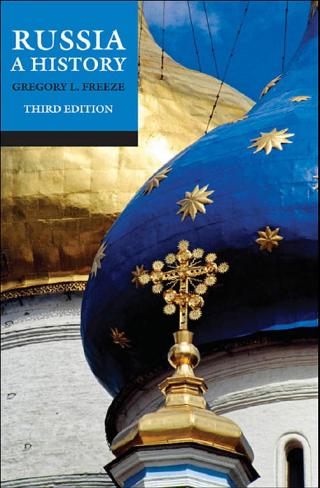
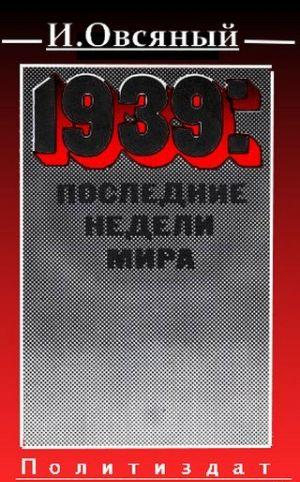
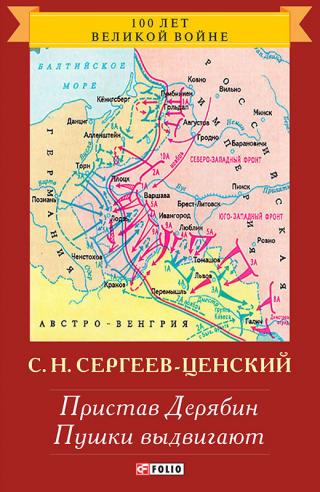

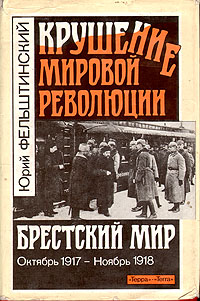
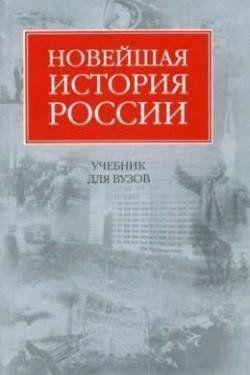
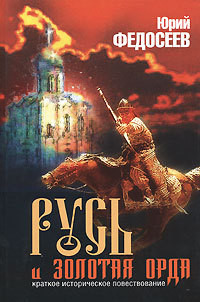
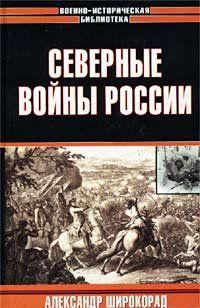
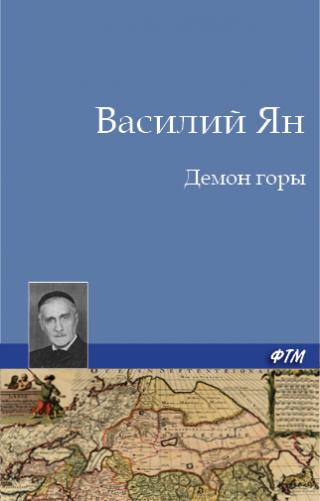

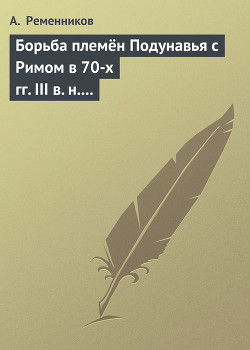
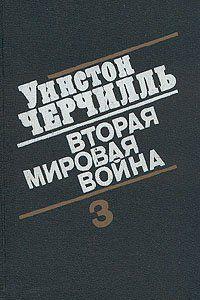
Комментарии к книге "Russia. A History"